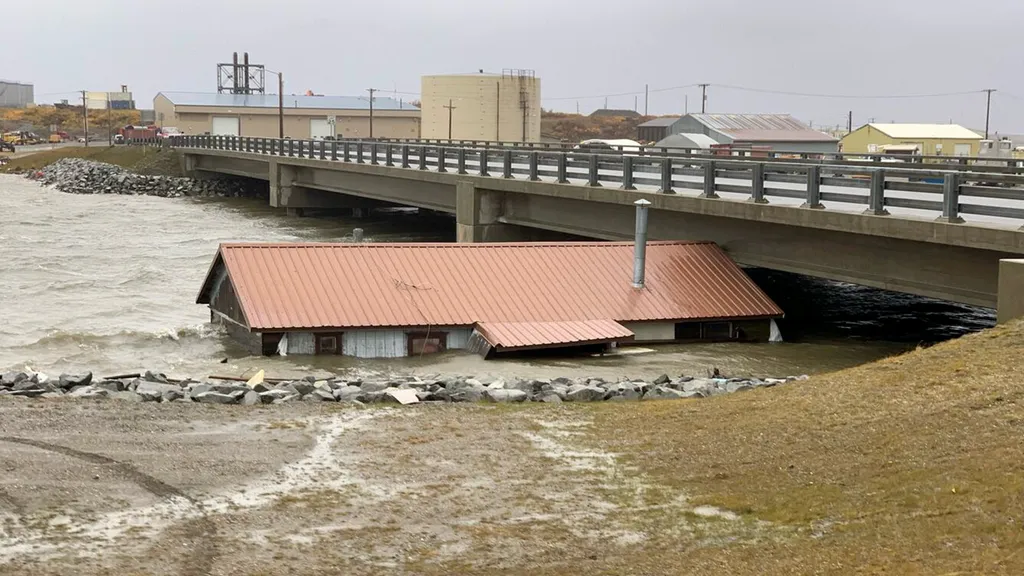- November 13, 2024
- By Cazzy Medley
While reliably snow-blanketed holidays might seem a thing of the past in Maryland and other parts of the East Coast—including Boston, which set a record this year for the longest stretch with no major snowfall—a new University of Maryland study reveals a much more urgent winter climate shift in a subpolar region of North America.
In findings published this week in the Journal of Climate, researchers with the Cooperative Institute for Satellite Earth System Studies (CISESS) at the Earth System Science Interdisciplinary Center (ESSIC) identified the Bering Sea in the northern Pacific Ocean as a climate change hotspot, showing how environmental changes there threaten the stability of vulnerable coastal communities and ecosystems.
The research team found that in nine of the last 10 winters, sea ice extent was lower than average, including record lows in 2018 and 2019. During this period of sea ice loss, wind speeds and wave heights increased.
“In the Bering Sea, sea ice acts both to dampen waves as they hit the edge of the ice cover, and also to limit the transfer of energy from winds into the ocean from which waves are generated. In turn, winds and waves can break up sea ice into smaller pieces at the ice edge,” said Reint Fischer, a graduate student in the Department of Atmospheric Sciences (AOSC) and first author of the paper.
Fischer used satellite remote sensing to analyze surface ocean conditions in the Bering Sea, working alongside co-authors Associate Professor Sinead Farrell of AOSC and the Department of Geographical Sciences, ESSIC Senior Faculty Specialist Kyle Duncan and oceanographer John Kuhn of the National Oceanic and Atmospheric Administration.

Less sea ice means less protection for coastal communities, they said.
“If sea ice continues to decline here, then we would expect that the extreme waves we have already observed with our satellite data would have a bigger impact on coastal communities,” said Farrell, who also serves as Fischer’s Ph.D. adviser.
The increased power of Bering Sea storms was illustrated in September 2022 when Typhoon Merbok ravaged 1,300 miles of Alaskan coastline, destroying homes, food supplies and infrastructure. Rescue services for the isolated communities had to be coordinated by sea or air--a slow and costly process.
This recent shift in the Bering Sea is surprising because the region has previously been remarkably stable. Between 1980 and 2010, ice extent in the Bering Sea remained steady, even when other Arctic regions were already experiencing significant sea ice declines.
Sea ice is expected to continue declining as the Earth warms; by the 2040s, scientists expect sea ice extent in the Bering Sea to regularly dip below the record low set in 2018. The Bering Sea ice season is also expected to decrease by up to a full day per year through 2044. This transition will bring unpredictable effects to the region and its people.
The team hopes to expand upon this research by studying regional climate models and integrating field data to verify satellite observations. The researchers also hope to combine their studies’ conclusions with historical records of sea ice by Alaska’s Indigenous communities.
“The decline in sea ice is directly affecting the coastal communities of Alaska and [Indigenous communities] have personally witnessed the changes that have happened in the region,” said Duncan.
